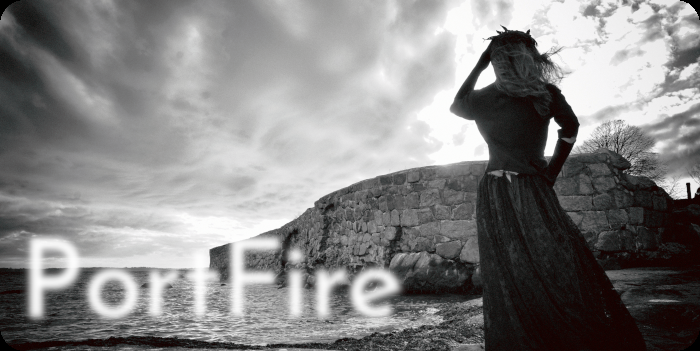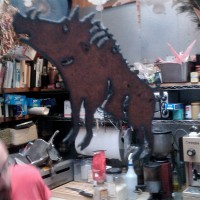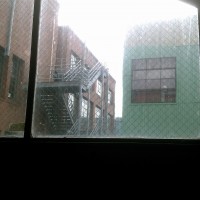Posts
A Thanksgiving Prayer
Out of Town Guests
*This was originally submitted to Round 7 of the NPR Three Minute Fiction contest* It didn’t win.
They came in on a mid-afternoon train from Boston to Mystic, stowed away in the dark folds of Ginny’s unmentionables deep within her suitcase. She was excited to see her boyfriend after a month in Europe, but not nearly as excited as the guests she was unwittingly transporting from the bay-side hotel she stayed in after her long flight from Paris. The hunger-bubbles in the bellies of her stowaways were growing, and there was only one thing that would appease their appetite, and that was blood, tasty human blood.
It’s not that this multi-generational, extended family wasn’t happy living in Ginny’s dirty laundry, but they all were looking forward to a new place to stay and a hot meal. Even bedbugs enjoy a little travel and some foreign food once in a while. Luckily for them, since Ginny’s boyfriend, John, lived in the house in the middle of the train station parking lot, both was only a short walk away.
Ginny and John were in the middle of a whirlwind spring-fling turned summer-romance when Ginny’s job sent her off to Paris to cover the goings-on surrounding fashion week. For a month she bounced around from party to party, hotel to hotel, hobnobbing with the fashion elite, updating her renowned fashion column with candid pictures, and all the racy behind the scenes details she encountered along the way. Naturally jealous, John could barely handle her going away so soon after they met, but the numerous pictures she posted every day of herself and all those chiseled male models really wound his guts into tight, sickening knots.
John was excited to see Ginny, and by the time she’d unloaded her suitcase onto his bed, sorting the dirty clothes from the clean, his urge to lustfully pounce upon her won out over the jealousy that was simmering inside him, but just barely. The bedbugs, now more terrified than hungry, quickly scattered to the safety of their new-found home in John’s bed. As the late afternoon sky dimmed to a pale blue, the two of them indulged in each other passionately, a mix of animalistic rawness and pristine, young love. By the time the sun had fully set, the two of them laid spent, a tangle of limbs and twisted sheets, each reliving the afternoon in quick flashes and silly grins.
Soon, however, John’s jealous mind got the best of him, and his blissful bedroom cooing was replaced with a litany of questions, each more pointed than the last. Ginny bristled and pulled herself away from John, and the hungry bedbugs took a chance and began to make their way to a much needed supper. As Ginny angrily packed her suitcase, John’s jealousy became remorse, and John’s legs became a banquet for his still undiscovered guests.
By the time Ginny and John were done screaming at each other, the bedbugs were plump with blood and quite content with their new home. By the time Ginny was on the next northbound train, John began to realize that his jealous demeanor and short fuse made him a bachelor once again. At the same time, a bite from one of his new bedbug buddies began to burn and itch. Weeks later, John figured out why his sheets were covered in little dots of blood, and it was longer, still, before he made the connection that each fresh bite may be a tasty bit of karma for the way he treated Ginny. Sometimes life’s lessons are lost, sometimes they linger in the dark and bite you when you least expect it.
Erik P. Kraft’s Daily Haikus & Drawings
A new haiku and drawing every single day – fascinating humor and insight from the author of Miracle Wimp and Lenny and Mel – check out much more at his Tumblr –
“Printer prints all pink!”
Several inks are not loaded
There’s your problem, dinks
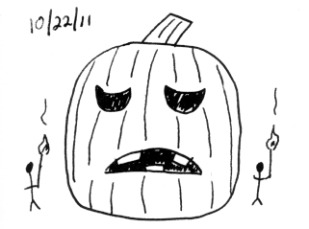
Watchlar
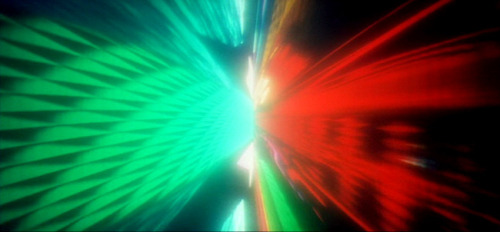
Beautiful + transcendental original music from Benjamin Farrar, interspersed with fantastic imagery –
At the secret forge. SF. CA.
We have a friend.
He owns a forge.
It’s one of my favorite places in SF.
Fall Colors
Fall on Alaska’s riversides reeks delightfully of the sweet smell of composting vegetation and the sour, pungent aroma of rotting salmon, spawned out and left to decay on the bank by the recession of high summer waters or left half-eaten by any of a number of their predators. Those still surviving are crimson, snaggle-toothed, hook-nosed, and rotting alive off of their skeletons as they swim weakly over their redds. Their eggs and trailing strips of flesh become an autumn bounty for trout, char, and grayling.
Dolly Varden (Salvelinus malma) were affectionately named after a Dickens character and are an anadromous char related to brook trout, lake trout, and their nearly indistinguishable cousins, Arctic char. They can be found in fresh and salt water between Puget Sound and the Mackenzie River. In summer they are a silver-sided fish like salmon, and during autumn spawning take on the colors shown here. Unlike Pacific salmon, they do not die with the deposit of their eggs. Through the 1920’s and 30’s they carried a bounty on their heads because they were seen as the primary predator of young salmon, a perception that was proven to be erroneous. Though still not highly prized as a game fish, they now receive protection across the state of Alaska, which limits angler take, and in some waters they are regulated as catch and release.
This specimen was taken and released unharmed from the Kenai River in Sterling, Alaska, using a fly designed of chenille, feathers, and rabbit fur to imitate torn salmon flesh.
Second day of Autumn 2011

Autumn is less dramatic here than it is back home in Mystic. The air cools, but only slightly at first. The leaves change slowly, if at all. However, the sky changes, it hangs a deeper shade of blue, and the clouds come in from the ocean and stack themselves against the hills.
Differentiated Instruction
She still had no idea why she said yes. Her auntie, she supposed.
“No one here still remembers. Everyone was young. Your father and uncle are gone.”
You remember, she thought.
“How will your brothers and cousins learn? No one at the school teaches the old ways.”
Nor would she. The line to the old ways had been severed long ago. Living elders and identified youngsters tried earnestly to splice the line, but with each fiber they secured, it seemed five times as many people wandered away into the 21st century fray and forgot.
The Beechcraft lurched forward as an opening appeared in the clouds. The pilot raced for the ground so as not to burn more fuel waiting. She watched ribbons of fog and snow peel back from the wings and flutter behind as the plane aimed with an insecure purpose for a depression in the white landscape below.
The runway in summer was a gravel pad piled over the flattest part of the tundra near the village. In winter it was an approximation determined by the plow. The pilot straightened the plane and began a short approach over the snow berm at the head of the runway. The windsock fluttered weakly as the wind slightly increased again.
She looked out the window and saw her house. She saw the dog yard where her incredulous father had strangled her favorite two puppies in front of her, on the day the principal had called home to say that he suspected, based on the child’s report, that her uncle had abused her. Her father was only too eager to accommodate her tear-choked shrieks that she be allowed to go live with her mother in Nome. It had saved her, but now she felt like she was risking her life again. The village disappeared behind walls of snow, and she felt the tires hit the ground, bounce, hit a second time and slide slightly to the left as the pilot feathered the brakes down the packed snow.
The plane made a casual u-turn and stopped as the props idled to a halt. Several people in a mix of fur and modern insulated parkas waited on snowmachines. Another lone figure sat off by the maintenance shed beside a low wall of boxes and luggage that had collected a small drift of snow behind it while he waited for that hole to open in the clouds.
One of the waiting party on sleds drove directly up to the plane and loaded parcels as the pilot emptied the plane’s tail and belly of cargo and mail. Then he sped back off the runway toward town followed by the others.The hole in the clouds closed. Fog swirled over the runway. The pilot cursed and climbed back in the plane. The man across the field rose and stared. She snugged the hood and collar of her technical shell tighter and pulled on the sealskin mittens her auntie had sent back when she graduated high school.
She picked up her cargo bag and her rifle and ambled in the general direction of the maintenance shed. The man looked at her but did not relax the embrace in which he held himself against the damp infiltration of the wind and sting of freezing fog. He stooped frigidly and hefted two pieces of luggage. “They told me I don’t belong, that I need to go.”
She smiled at him sadly and replied, “That was the last thing anyone said to me before I left here, too,” then continued her walk toward town.
gratitude for Ken Fish for the inspiration.
© Adam Knight
Mason’s Stoup 7 [the vernal explosion]
Mason's Stoup 7 [the Vernal Explosion] by tarbox69 on Scribd
